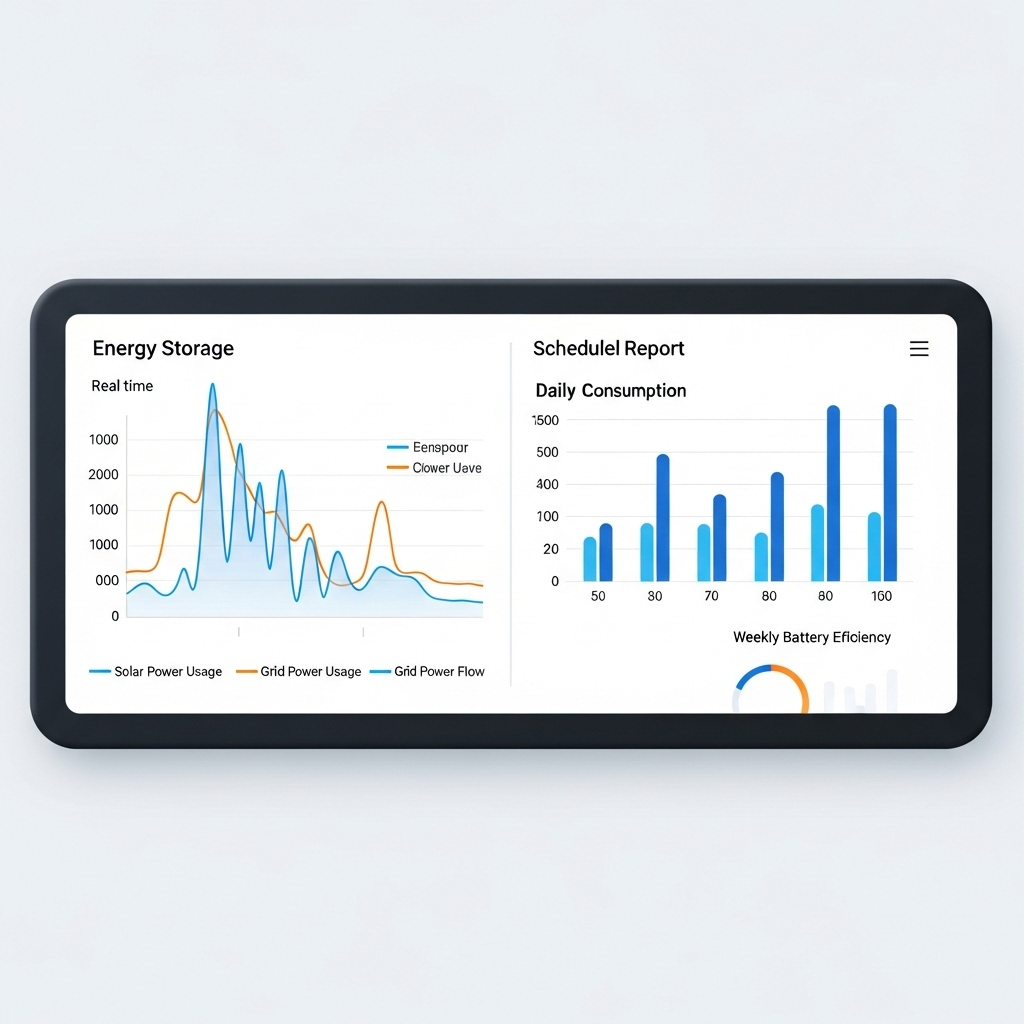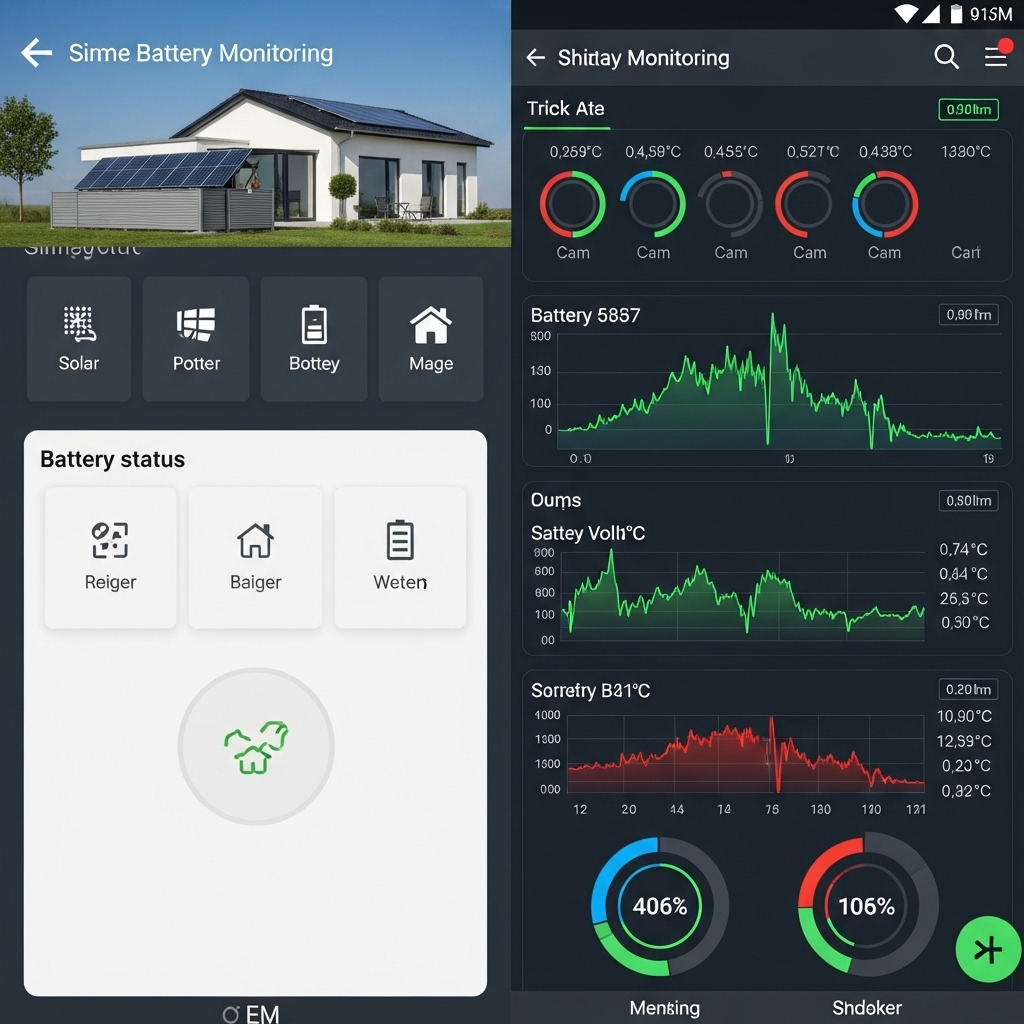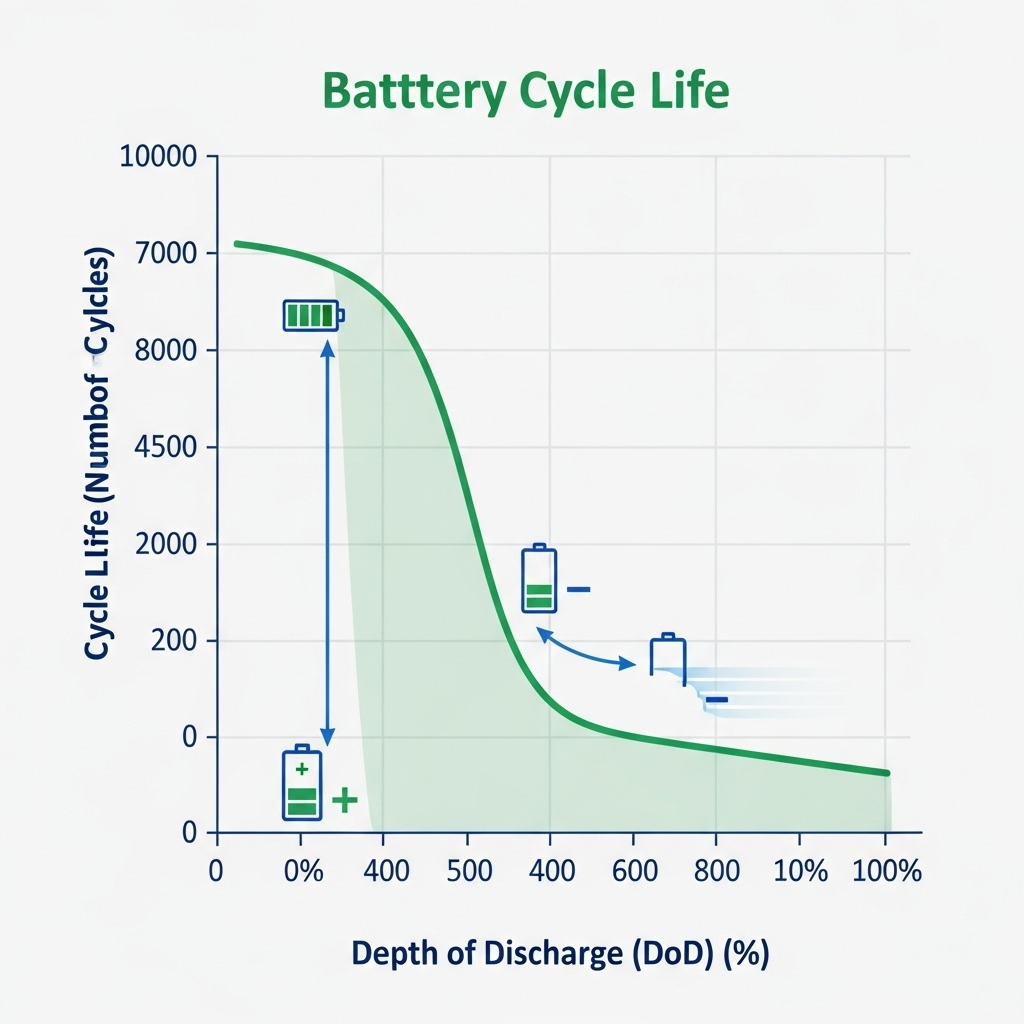Understanding how your home energy storage system (ESS) operates is fundamental to maximizing its value. Monitoring is your window into its performance, but not all monitoring methods are the same. The two primary approaches, real-time and scheduled monitoring, offer different insights. Choosing the right one depends entirely on your goals, from saving money on electricity bills to ensuring your home stays powered during an outage.
Understanding the Core Concepts: What Are Monitoring Schedules?
The distinction between real-time and scheduled monitoring comes down to data frequency and granularity. One gives you an immediate, live view, while the other provides a strategic overview. Both are valuable, but they serve different purposes in managing your home battery performance.
What is Real-Time Monitoring?
Real-time monitoring provides a continuous, second-by-second stream of data from your ESS. It shows you exactly what is happening at any given moment. You can see the instantaneous flow of power from your solar panels, to your battery, into your home, or back to the grid. It tracks precise voltage, current, and temperature, offering an unfiltered look at your system's operations.
What is Scheduled Monitoring?
Scheduled monitoring, in contrast, collects and records data at predetermined intervals. This could be every minute, every 15 minutes, or once an hour. Instead of a live feed, you get periodic snapshots. This method is excellent for identifying trends, calculating average efficiency over a day, and tracking energy consumption patterns. It summarizes performance rather than detailing every momentary fluctuation.
Real-Time Monitoring: The Power of Instant Insight
For the hands-on ESS owner, real-time data is a powerful tool for active management and immediate problem-solving. It allows you to make quick decisions that can improve efficiency and prevent system faults.
Key Advantages for Active System Management
With a live data feed, you can detect anomalies the moment they occur. A sudden voltage drop or a temperature spike can be identified and addressed before it causes damage. This is also incredibly useful for optimizing energy use with time-of-use (TOU) utility rates. You can watch your consumption live and shift heavy loads to off-peak hours to reduce costs. The International Energy Agency (IEA) reinforces this principle, stating in its Next Generation Wind and Solar Power report that operational decisions should be updated as close to real time as possible to ensure system balance.
When is Real-Time Monitoring a Necessity?
Certain situations demand real-time oversight. If your home relies on critical loads, such as medical equipment or home servers, instant monitoring is non-negotiable to ensure uninterrupted power. It is also vital for off-grid properties, where every watt-hour must be carefully managed. During the initial setup and commissioning of a new ESS, real-time data helps installers verify that the system is operating correctly under various load conditions.
Potential Downsides
The primary challenge with real-time monitoring is the sheer volume of data. For a casual user, a constant stream of information can be overwhelming and difficult to interpret. It also requires more robust data transmission and storage infrastructure, which can sometimes translate to more complex or costly monitoring hardware.
Scheduled Monitoring: Strategic Analysis for Long-Term Health
While real-time monitoring is about the 'now,' scheduled monitoring is about the 'big picture.' It provides the historical context needed to assess the long-term health and efficiency of your home battery.
Benefits for Trend Analysis and Planning
By analyzing data collected over weeks, months, and years, you can identify subtle performance degradation that might otherwise go unnoticed. Scheduled reports are ideal for tracking key battery health metrics like State of Health (SoH) and Round-Trip Efficiency. This historical data also allows you to accurately forecast your future energy production and consumption. As noted by the International Renewable Energy Agency (IRENA), periodic tests and ongoing monitoring are crucial for verifying that system performance does not degrade over time. This approach, detailed in its report on Grid Codes for Renewable Powered Systems, is essential for maintaining system reliability.
Ideal Scenarios for Scheduled Reports
Most grid-tied residential ESS owners will find scheduled monitoring perfectly suits their needs. If your primary goal is to reduce your electricity bill and perform occasional health checks, periodic reports provide all the necessary information without the complexity of a live feed. It is the preferred method for users who want a reliable system that operates in the background without requiring constant attention.
Limitations to Consider
The main limitation of scheduled monitoring is its inability to catch sudden, transient events. A fault that occurs between data logging intervals might be missed entirely or only noticed long after the fact. This can result in a delayed response to critical issues that require immediate action.
A Hybrid Approach: Getting the Best of Both Worlds
Fortunately, you often do not have to choose between real-time and scheduled monitoring. Many modern ESS platforms integrate both methods to provide a comprehensive and flexible monitoring solution.
Combining Instant Alerts with Long-Term Data
A hybrid system uses real-time monitoring to watch for critical events and trigger instant alerts—for example, if the battery temperature exceeds a safe threshold. At the same time, it logs data at set intervals for historical analysis. This gives you peace of mind with immediate notifications while also providing the data needed for strategic, long-term performance reviews. The ability to use timely data is a key theme in energy management, as reinforced by the IEA's China Power System Transformation report, which highlights how real-time information unlocks greater value.
Customizing Your Monitoring Strategy
You can create a powerful monitoring strategy by setting custom alert thresholds for immediate notifications on critical parameters. Simultaneously, you can schedule automated weekly or monthly reports to track key performance indicators (KPIs). For a deep dive into which metrics are most important, the ultimate reference on solar storage performance offers a complete breakdown of what to monitor for optimal battery health.
| Feature | Real-Time Monitoring | Scheduled Monitoring |
|---|---|---|
| Best For | Immediate troubleshooting, active load management | Long-term trend analysis, general health checks |
| Data Granularity | High (per second) | Lower (per minute/hour/day) |
| User Type | Hands-on user, off-grid, critical loads | Set-it-and-forget-it, grid-tied residential |
| Primary Goal | Optimization & Fault Detection | Health & Performance Benchmarking |
| Key Insight | 'What is happening right now?' | 'What has happened over the past month?' |
Making the Right Choice for Your System
Ultimately, the ideal monitoring strategy depends on your specific needs. Real-time monitoring empowers you with immediate control and is essential for critical applications. Scheduled monitoring offers the strategic insights needed for long-term health and financial planning. The most capable Energy Storage Systems provide both, giving you the flexibility to engage as much or as little as you want. The goal is to transform raw data into actionable knowledge that protects your investment and secures your energy independence.
Frequently Asked Questions
Can I switch between real-time and scheduled monitoring?
Most modern ESS platforms allow this. You can view a live dashboard for real-time data and access a separate section for historical reports, which are based on scheduled data collection.
Does real-time monitoring use a lot of internet data?
It can use more data than scheduled monitoring, especially if you are constantly streaming the dashboard. However, many systems are designed to be efficient, and the data usage is typically minimal for most home internet connections.
Which method is better for extending battery lifespan?
Both play a role. Real-time monitoring helps you avoid immediate harm (like extreme temperatures or deep discharges) by providing instant alerts. Scheduled monitoring helps you track long-term State of Health (SoH) and adjust your usage patterns over time to maximize lifespan. A combination is ideal.





Leave a comment
All comments are moderated before being published.
This site is protected by hCaptcha and the hCaptcha Privacy Policy and Terms of Service apply.